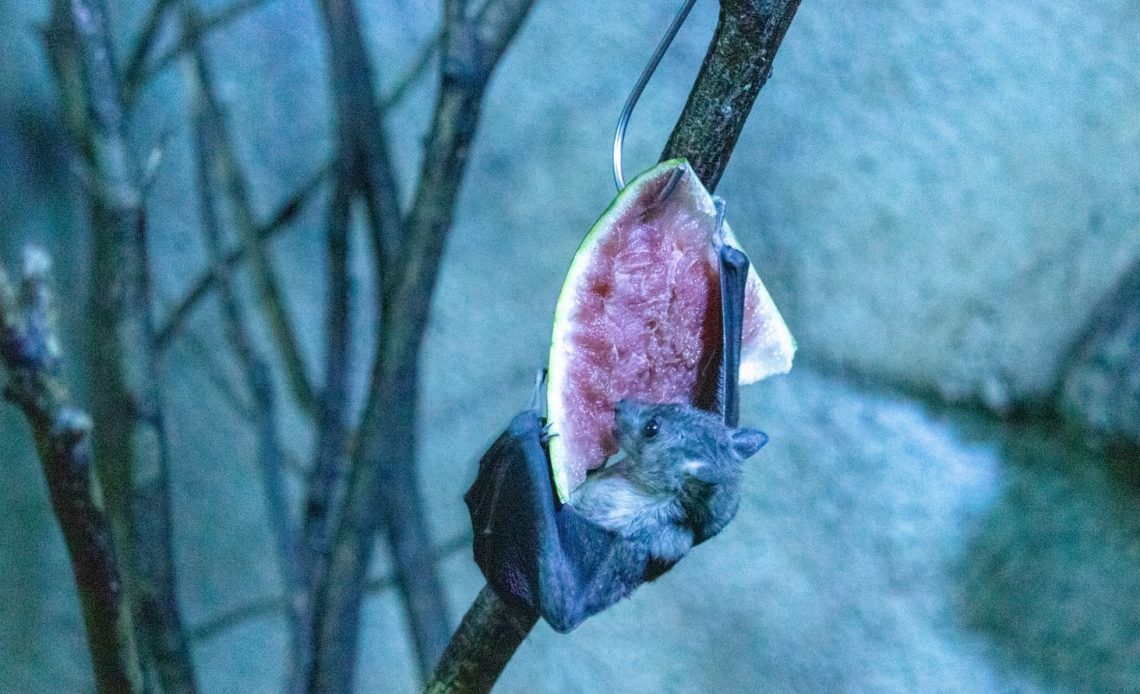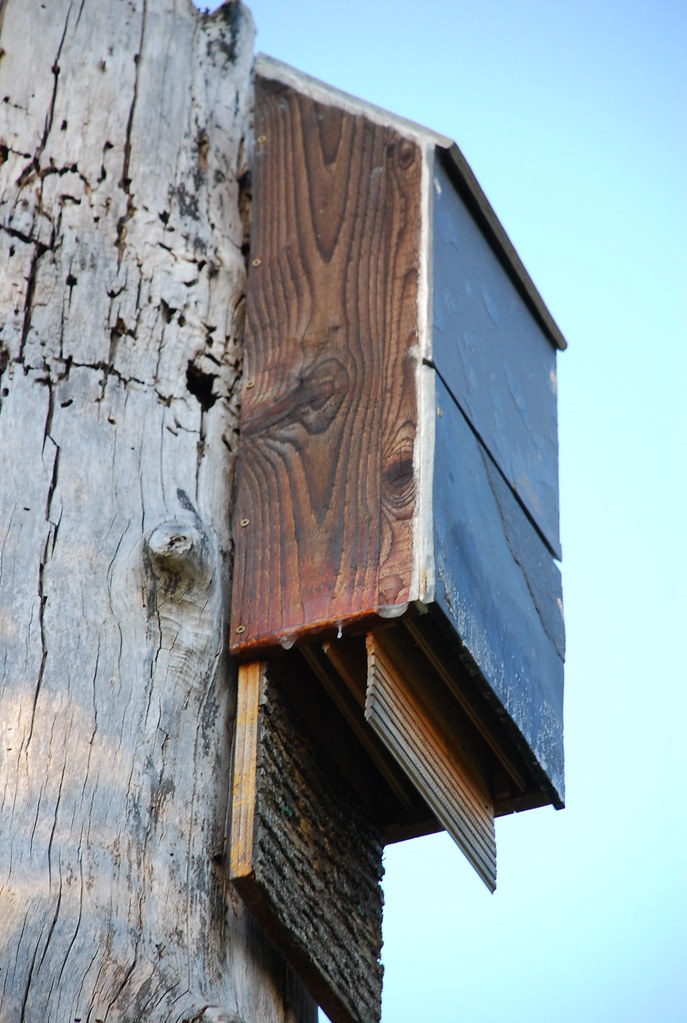

We’re here to help! Wild Yards is a completely free website that is 100% dedicated to helping you create a wildlife-friendly, sustainable yard. Read more
WildYards is reader-supported. When you buy a product through a link on our site, we may earn a comission. Every product is independently selected by our (obsessive) editors and our reviews are unbiased and objective. Read more about our mission or our privacy policy.
Bats are not always the most welcome creatures. In this article, along with learning some bat lore, you’ll learn how to attract bats to your yard and why you would even want to.
From stories evoking the imagery of vampires to fears of fiendish fur-balls flying around our attics, the common picture of a bat can be a little dark. Around the world, though, bats carry a track record of fortune both symbolically and ecologically.
You might notice, for example, an large number of bats taking flight in Chinese or Japanese works of art. This stems from a little linguistic trick where the word for “bat” in Chinese is pronounced nearly identically to the word for “happiness, fortune or blessings” (蝠 and 福, respectively, both sounding like fú). The Japanese carried the homonym over into their own kanji script, and both cultures embellished artwork with the presence of 5 “blessing bats,” one each for the traditional ideals of health, wealth, long life, virtuousness and a peaceful death.
One wonders if the background to this good omen extends beyond the linguistic. Bats have been incorporated into Eastern Medicine remedies for thousands of years. They’ve also packed an almost unparalleled punch in ecological contributions, something which wouldn’t have escaped the notice of Asian agriculturalists. Here’s a short list of what they do to help the local ecosystem:
- Pollinate countless flowers
- Disperse mountains of seeds
- Consume large quantities of
insects and pests - Fertilize swathes of soil with nitrogen,
phosphate and potassium-rich
droppings
Their contribution to pollination alone draws comparisons to the ecological importance of bees. For that reason many argue for commensurate conservation efforts around the world. What’s more, a recent study on American farms found that “bats not only suppressed crop pest numbers and crop damage but also indirectly suppressed the presence of pest-associated fungus and a toxic compound produced by the fungus.”
With all of these benefits to offer, even individual, eco-friendly homeowners are increasingly seeking out ways to attract bats to take advantage of some of these bats’ symbolic and ecological benefits.
Whether it’s some rich, organic fertilizer or the decimation of their mosquito problem that they’re after, homeowners want to bring these bats to their own backyard. If you can imagine organic pest and insect control and free fertilizer helping out your backyard or local gardening, then bringing these “blessing bats” your way might be the right call for you too. To achieve this, you’ll want to consider the following bat attraction strategies:
3 Simple Steps to Attract Bats to Your Backyard
1. Set Up a Bat House or Roost
More than anything, purchasing or building a bat house will get you moving in the right direction. This is the highest impact practice that opens the door to individual bats or even whole roosting families settling in on your property. If you’ve set up a birdhouse before, get ready for something a little different.
Bats prefer to swoop in and out of the bottom of their shelter, so bat houses look more akin to a thin, wooden mailbox, opened and pointing toward the ground.

The best bat houses are made out of coarse, nontoxic and non-pressure-treated wood (such as cedar or plywood) and constructed to standard dimensions approximating 24in (60cm) tall, 12in (30cm) wide and 3in (7.5cm) deep.
The mailbox interior is either quite narrow or deliberately stuffed tight with “mail”: extra panels of rough wood for the bats to easily find and hold their perch on. The rougher and closer-quarters you have in the interior the better – bats want to hold tight and squeeze together for warmth.
If you’re looking to buy a bat house we recommend checking out this Kenley bat house. Interested in building a bat box? Check out these amazing bat box kits.
If you’re handy with tools, you can also find DIY plans from Bat Conservation International detailing both standard and non- standard house plans, such as the Single Chamber House, Two-Chamber Rocket Box, or Four-chamber Nursery.
With a purchased or DIYed bat house in hand, you still have 3 important L’s to consider.
Location
Bats want their shelter high off the ground, with easy accessibility and distance from potential predators.
Affixing their house 15-20ft (4.5-6m) off the ground on an exterior structure wall or a freestanding pole that is amply distant from trees will work best. Having trees within eyesight might in fact be helpful, but bats don’t want to immediately meet predators at their front door – whether those predators are popping up from tree branches or the ground.
Here’s how to find the best place to hang your bat house.
Lighting
Your bats do not want any artificial light at night.
Make sure to avoid streetlights or other outdoor light fixtures as best as you can if you want to attract bats. However, your bats will be looking for an abundance of light come daytime. Sunlight helps get the house nice and toasty, so facing their house south by southeast for maximal sunrise-to-midday exposure will make for warm, happy bat campers.
Some like to paint their home’s sides with a dark tone of nontoxic, water-based paint to magnify the heat absorption. It can take a surprising amount of heat to keep bats healthy and satisfied: they want at least 85 – 100 deg F (30 -38 deg C) inside at all times when home. The bat house linked above comes pre-painted to satisfy the bat’s needs.
Timing
Most bat families and individuals like to roost anew in early spring, which means that having a nice, accommodating and attractive-looking bat house up by the end of winter should put you in the best position to strike their home-buying fancy.
Even if you’re just putting your bat house on the market by June or July, you still might catch those house-hopping customers still shopping around. But you might not get your move-ins right away. It’s not atypical for bat boxes to fill up after 1 or even 2 years. It’s appropriate to be patient. That said, if it’s been more than 2 years of continual vacancy, it is probably time to try a new location or house design.
2. Incorporate Water

If your property is within a quarter mile of a considerable body of water, you’re in luck. Momma bats will be happy to move into the neighborhood, and with them comes their hubbies and pups. Because of their reluctance to leave the house unguarded for long, thirsty bat mothers prefer to pop out for a quick drink by swooping in to skim the surface of a nearby lake, river or sizable stream. You could be blessed by a brood of 200 or more members with enough of a water body nearby.
On the other hand, even if you don’t enjoy such advantageous aquatic features, you can take the power of nature into your own hands and build a large water feature. With whatever water you can muster, be it a constructed pond or a large bird bath, more water means more bugs for the bats to follow to your yard as well as more chances to quench their thirst.
The augmenting effect of water can be so powerful, in fact, that you may want to adjust your bat house’s design according to the water you’re working with.
If you’re lucky enough to have a large natural source of water nearby, you might want to choose a larger bat house appropriate for an entire colony of bat mommas, poppas, and pups. For those with a bird bath’s amount of H2O, a smaller house ready for a few single-and-ready-to-mingle male bats might fit the bill.
Whichever audience you play to, having water will help attract bats, and even a young male flying solo can consume as many as 1,000 mosquitoes per hour – so you don’t need to worry if you’re only getting crowds of yuppie bachelors. They’ll bring the ecological boons nearly as well as a full family.
3. Plant Mixtures of Night-blooming Flowers & Native Plants and Fruits
To really lock in the arrival of your bat families or bachelors, look to your gardens.
If your plants can attract bugs, then you can attract bats (and the bats will clean up the bugs for you nice and quick once they’ve moved in). You’ll be in even better shape if your plants are bringing bugs for the favored feeding time – at night. Consider planting night-blooming and night-scenting flowers, or even a full moon garden.
Here is a large list of night-blooming flowers you should consider for your garden if you want to attract bats:
- Datura
- Moonflower
- Evening primrose
- Yucca
- French marigold
- Dahlia
- Cleome
- Night-blooming water lily
- Night-blooming jessamine
- Goldenrod
- Nicotiana
- Honeysuckle
- Four-o’clock
- Fleabane
- Night scented stock
Bats will also find fruit favorable (because it brings the insects in), and it never hurts to incorporate native, local plants for the local bats to feel at home. Bring in raspberries or cherries and whichever plants are native to your ecosystem.
Tips & Tricks When Learning How to Attract Bats
If you’ve joined us all the way down here, it shows you have the sort of dedicated mind that will dig into the details of how to keep this bat project going well for the long haul. Below we have some important tips and tricks when learning how to attract bats:
- Protect your own house. If you’ve got a happy brood making life work in your four-chamber nursery bat house while there are holes or crevices in your multi-chamber human house nearby, you can bet those bats are going to branch out and find some way to get cozy in your siding or attic. Make sure to go over the exterior of your house with due diligence and seal up or fix any small entryways your bats would be tempted to take advantage of – we love our bats, but we’ll make for much better neighbors than roommates.
- Protect your bats from rain. Consider investing some extra love into your bat home by adding some roofing and caulking your seams. A shingle clad or metal roof component will help to preserve the life of your wood materials (no thank you, wood rot) and the caulk on each of the seams will keep rain from seeping into the interior (while also contributing to your home’s heat retention, bonus!).
- Protect your house from squatters. Come winter time, your bats may vacate the premises temporarily. This is a prime-time opportunity for wasps or other guests to move in. Each winter, at least before spring rolls in, double-check your houses and
carefully clean out any uninvited wasp nests or other unintended residential leftovers. - Mind the guano and the blessings. As much as we love this free, organic fertilizer, we want to take care not to misuse it. Rather than collecting it with a bucket (which can pose a life-threatening challenge to the odd baby or clumsy bat who drops out of the house from losing their perch), use a shovel and gloves to redistribute the droppings to your garden or composting areas. Also, always bear in mind that putting bare hands on your “blessing bats” is not a good idea; they should be treated with due respect. Make sure that your family or visitors know better than to threaten your bats’ health or put themselves at risk of a bite by trying to touch your bat friends.
- Regular maintenance. With a couple years of successful bat property management under your belt, it might be time to touch up your place. Refresh your house with new paint and caulking every 3rd or 5th anniversary of tenancy and check the roof for its integrity.
Summary
If you put this three-pronged plan into practice, there’s a comfortably high probability that you will attract bats to your yard within a year or two. From there, you can enjoy their benefits, including far fewer mosquitoes (or moths, or garden pests), far more fertilizer (guano galore) and perhaps even pollination (if you have the goods for them to carry, such as agave plant seeds). Welcome your flying friends to the neighborhood and enjoy the fú (福)!
